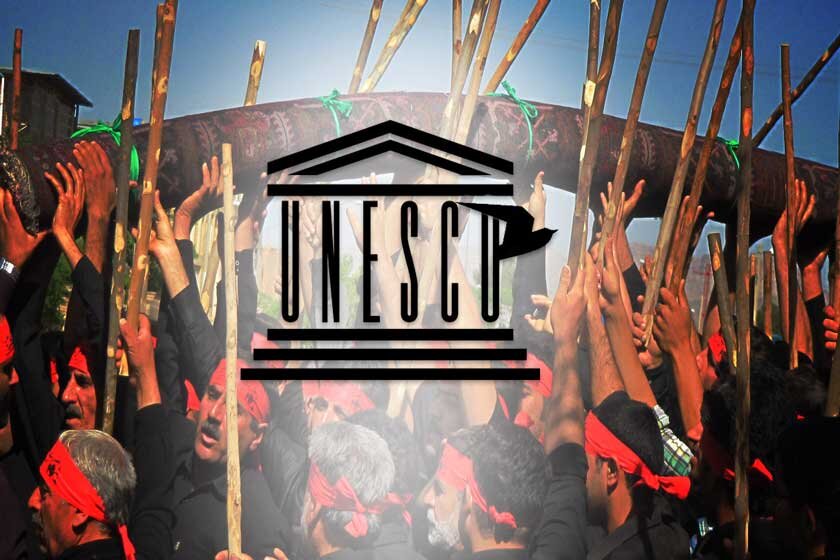For people of Mashhad-e Ardehal, observing Qalishuyan is a blend of ritual and culture

TEHRAN—On an autumn morning, earlier this month, hundreds of the locals from Mashhad-e Ardehal and its surroundings came together in Khaveh to observe a time-honored religious ritual.
Passed down from generation to generation, Qalishuyan is practiced to honor the memory of Soltan Ali, a holy figure among the people of Kashan, Fin, and some other cities and villages nearby.
Inscribed on UNESCO’s Representative List of the Intangible Cultural Heritage of Humanity, the ritual takes place on the nearest Friday to the seventeenth day of the seventh Iranian calendar month of Mehr.
To observe the ritual, people come to gather at a mausoleum to sprinkle rosewater on the carpet in the morning. Having completed the wrapping rituals, they deliver it to the people of Fin outside, who rinse a carpet in running water and sprinkle rosewater drops with neatly cut and beautifully decorated wooden sticks.
According to legend, the dead body of Soltan Ali was found and carried in a carpet to a stream, where it was washed and buried by the people of Fin and Khaveh. The venue is the mausoleum of Soltan Ali, where a carpet is washed in the holy stream by a huge gathering.
The carpet is then returned to the mausoleum. People of Kashan contribute a prayer carpet, and some others celebrate their ritual the following Friday. These communities maintain oral transmission of the procedures, but also recreate the tradition by adding new and festive elements.
An alluring destination, Kashan boasts a bunch of architectural wonders, an atmospheric covered bazaar, boutique hotels, and a UNESCO-registered garden.
Many travelers opt to bypass the delightful oasis city that is sprawled on the edge of the Dasht-e Kavir on their journeys between Tehran and Isfahan provinces.
In addition, the ritual draws many visitors from across the country. Infact, religious tourism, which marks one of the oldest forms of traveling, is exclusively or strongly motivated by the rich culture of the nation.
Rich in spiritual tourism, Iran is home to hundreds of shrines, imamzadehs, mausoleums, churches, and even fire temples amongst other religious destinations which are dedicated to different faiths.
Gateway to many sights
Kashan is situated on a route that connects Tehran to the giant destinations of Isfahan, Shiraz, and Yazd. Moreover, the ancient town is a gateway to many sights, stories, and surrounding attractive villages to discover. Amongst the highlights are the lavishly-decorated houses of Brujerdi, Tabatabai, Ameri, and Abbasi.
Apart from cultural sites such as a domed bazaar, where travelers can find loads of Kashani traditions and souvenirs, they may escape the city for the UNESCO-registered Fin Garden, which is believed to be the epitome of Eden.
Kashan is highly famed for rosewater distillation ceremonies, which draw visitors from all over the country. Many believe traditionally-distilled rosewater is of higher quality than that produced in factories probably due to shorter time intervals between the harvest and distillation practices. Golab or rosewater is a fragrant distillate of Mohammadi roses, which is used in dishes to flavor them or consumed as a religious perfume as well.
In addition, Kashan embraces some archaeological gems. Most importantly, the Tepe Sialk yielded interesting pottery pieces, metal tools, and domestic implements made from stone, clay, and bone that date from as early as the 4th millennium BC.
AM
Leave a Comment